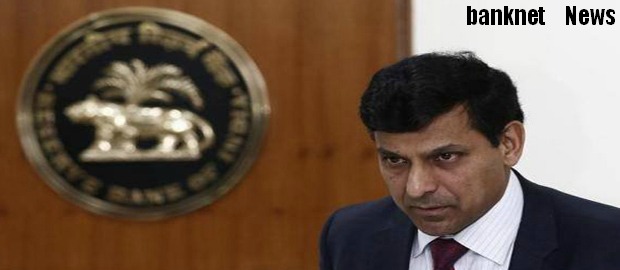

Sixth Bi-Monthly Monetary Policy Statement, 2014-15 By Dr. Raghuram G. Rajan, Governor, RBI - Feb 03, 2015 - Full Text
I. Financial Markets
19. The Reserve Bank reduced the eligibility limit for foreign exchange remittances under the Liberalised Remittance Scheme (LRS) to USD 75,000 in 2013 as a macro-prudential measure. With stability in the foreign exchange market, this limit was enhanced to USD 125,000 in June 2014 without end-use restrictions, except for prohibited foreign exchange transactions such as margin trading, lotteries and the like. On a review of the external sector outlook and as a further exercise in macro prudential management, it has been decided to enhance the limit under the LRS to USD 250,000 per person per year. Furthermore, in order to ensure ease of transactions, it has also been decided in consultation with the Government that all the facilities for release of exchange/ remittances for current account transactions available to resident individuals under Schedule III to Foreign Exchange Management (Current Account Transactions) Rules 2000, as amended from time to time, shall also be subsumed under this limit.
20. With a view to meeting the emerging needs of foreign direct investment in various sectors with different financing needs and varying risk perceptions as also to offer the investor some protection against downside risks, it has been decided in consultation with the Government of India to introduce greater flexibility in the pricing of instruments/securities, including an assured return at an appropriate discount over the sovereign yield curve through an embedded optionality clause or in any other manner. Guidelines in this regard will be issued separately.
21. The investment limit in Government securities by foreign portfolio investors (FPIs), registered with the Securities and Exchange Board of India (SEBI) is currently capped at USD 30 billion of which USD 5 billion is reserved for long term investors. The limit on investment in Government securities is now fully utilised. As a measure to incentivise long term investors, it has been decided in consultation with Government to enable reinvestment of coupons in Government securities even when the existing limits are fully utilised.
22. FPIs are currently permitted to invest in Government securities with a minimum residual maturity of three years. No such condition has been stipulated for their investments in corporate bonds. To harmonize requirements, it is decided in consultation with Government that all future investment by FPIs in the debt market in India will be required to be made with a minimum residual maturity of three years. Accordingly, all future investments within the limit for investment in corporate bonds, including the limits vacated when the current investment by an FPI runs off either through sale or redemption, shall be required to be made in corporate bonds with a minimum residual maturity of three years. Furthermore, FPIs will not be allowed to invest incrementally in short maturity liquid/money market mutual fund schemes. There will, however, be no lock-in period and FPIs shall be free to sell the securities (including those that are presently held with less than three years residual maturity) to domestic investors. Detailed operational guidelines will be issued by end-February 2015.
23. In the first bi-monthly monetary policy statement for 2014-15, the Reserve Bank announced the implementation of the recommendations of the Committee on Financial Benchmarks (Chairman: Shri P. Vijaya Bhaskar). The Bank has issued guidelines on the governance framework for benchmark submitters on April 16, 2014. The Fixed Income Money Market Derivatives Association (FIMMDA) and Foreign Exchange Dealers Association of India (FEDAI) have since issued the Code of Conduct for benchmark submitters. An independent company named ‘‘Financial Benchmarks India Pvt. Ltd”, jointly floated by FIMMDA, FEDAI and Indian Banks’ Association (IBA) for administration of the rupee interest rate and foreign exchange benchmarks, has been incorporated. As a further step towards strengthening the benchmark-setting methodology, it has been decided to work out the necessary infrastructural and transitional arrangements for shifting the overnight MIBOR from the existing polling based system to transaction based system of the Clearing Corporation of India Ltd. (CCIL) by April 2015.
24. In order to develop the money and Government securities markets, cash settled 10-year interest rate futures (IRF) contracts were permitted to be introduced by stock exchanges in December 2013. A cash settled IRF contract on 10-Year Government of India (GoI) Security was launched in January 2014 and has received an encouraging response. In order to provide market participants with greater flexibility to hedge their interest rate risk, it has been decided to permit stock exchanges to introduce cash settled IRF contracts on 5-7-Year and 13-15 year Government of India Securities. Detailed operational guidelines will be issued by end-March 2015.
25. In June 2014, FPIs were permitted to participate in the exchange traded currency derivatives (ETCD) market. Simultaneously, the regulatory regime for participation of domestic entities in the ETCD market was modified with the objective of bringing about parity between the ETCD and over-the-counter (OTC) markets. With a view to providing greater flexibility to both FPIs and domestic participants in the ETCD market, it has been decided that:
domestic entities and FPIs will henceforth be allowed to take foreign currency positions in the USD-INR pair up to USD 15 million per exchange without having to establish the existence of any underlying exposure. In addition, they shall be allowed to take foreign currency positions in EUR-INR, GBP-INR and JPY-INR pairs, all put together up to USD 5 million equivalent per exchange, without having to establish the existence of any underlying exposure. Domestic entities and FPIs who want to take a position exceeding the above limits in the ETCD market will have to establish the existence of an underlying exposure.
for domestic participants who are importers of goods and services, the limit up to which they can take appropriate hedging positions in ETCD markets will be determined as 100 per cent of the higher of the (i) average of their last three years’ imports turnover or (ii) the previous year’s turnover, instead of 50 per cent at present.
documentation and other administrative requirements for hedging on the ETCD markets are also being rationalised.
Detailed operational guidelines will be issued by end-March 2015.
Sixth Bi-Monthly Monetary Policy Statement - GO TO MAIN PAGE
Assessment of the Indian Economy ... Read more
Policy Stance and Rationale ... Read more
Financial Markets ... Read more
Restructuring... Read more
Banking and Financial Structure
RBI Monetary and Credit Policies (1999-2015) - Notifications, Press Releases, Reports - Click here

BANKING

FINANCE

INSURANCE

TECHNOLOGY

Foreign Exchange


